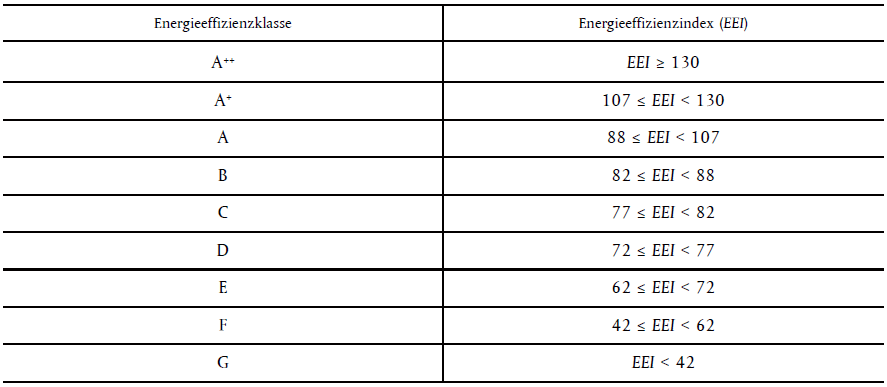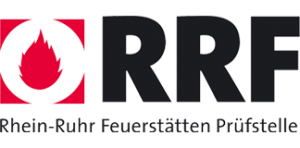Energy Labelling of local space heaters
The regulation was published on 21.07.2015 in the official journal of the European Union and officially came into force on 10.08.2015. This directive applies to every local space heater up to 50 kW. The requirements mentioned in the directive apply for every local space heater, that is no solid fuel heater without or with an open exhaust gas control starting 01.01.2018. For every construction product from 01.01.2022 on. The regulation as well as the framework regulation can be found under the following links:
- Regulation for Energy Labelling (EU) 2015/1186:
- Energy Labelling stands for reviewing the product and informs the purchaser about the energy efficiency. http://eur-lex.europa.eu/legal-content/EN/TXT/?uri=CELEX%3A32015R1186
- Frameworkregulation 2010/30/EU repealing (EU) 2017/1369:
- For setting the framework for energy labelling. http://eur-lex.europa.eu/legal-content/EN/TXT/?qid=1508154343210&uri=CELEX:32017R1369
Regulations are legally binding without additional legal transposition in the member states. Just the establishing of appropriate authorities or market authority and eventually national law, that are affected by this regulation.
Duties of the manufacturer
- For every local space heater inside the scope, the manufacturer needs to provide the retailer with printed and electronic versions of the label according to (EU) 2015/1186.
- As well as a printed and electronic version of a product fiche. For example, it can be placed inside the product brochure or other product literature. The label and other additional information need to be provided, so that the retailer is always able to give the customer the significant information.
- Upon request, a technical documentation has to be delivered to the commission or the authorities of the member states.
- Measurements and calculations need to be done according to the harmonised standards and technical specifications.
- The manufacturer is solely responsible for the creation of the label and labelling.
- On sale, the label must be visible on the frontside of the product.
Duties of the retailer or at point of sale
- Product-related advertisement or technical advertising material needs to reference the energy efficiency class.
- The label and the significant material must be provided with the product fiche if a product is not visible to the customer, while marketing (e. g. in-stock product).
- The label and product fiche do not have to be delivered on the product or “inside the box/outer packaging”.
Calculation and classification of the label
EEI = (ns,on * BLF) – 10% + F(2) + F(3) – F(4) – F(5)
Where:
- ns,on is the seasonal space heating energy efficiency in active mode, expressed in %
- ns,on = nsth,nom is the useful efficiency at nominal heat output, based on the lower NCV.
- BLF is the biomass label factor
- for biomass local space heaters: factor = 1,45
- for fossil fuel local space heaters: factor = 1
- F(2) is a correction factor accounting for a positive contribution to the energy efficiency index due to adjusted contributions of controls of indoor heating comfort, the values of which are mutually exclusive, cannot be added on top of each other, expressed in %;
- F(3) is a correction factor accounting for a positive contribution to the energy efficiency index due to adjusted contributions of controls for indoor heating comfort the values of which can be added on top of each other, expressed in %;
- F(4) is a correction factor accounting for a negative contribution to the energy efficiency index by auxiliary electricity consumption, expressed in %;
- F(5) is a correction factor accounting for a negative contribution to the energy efficiency index by energy consumption of a permanent pilot flame, expressed in %.
Energy efficiency class of local space heaters

The European Commission has provided a useful tool for the creation of the label on their website http://eepf-energylabelgenerator.eu. This is not a guidance for the calculation of the label, but rather helps you with the correct format and the print ready version of the label.
Exceptions from this label
- Art. 1 (a – j)
- e.g. sauna ovens, air heating products and solid fuel local space heaters, that were not factory mounted or prefabricated components or parts, from the same manufacturer, delivered to the place of assembly.
- Used products. As far as they were not imported from a third country (EU) 2017/1369 Art. 1 (2) a
- Re-sale of exchanged goods (if used)
- Repaired products, if not significantly changed or that got a new warranty / guarantee (complete overhaul)
- Except outlet or b-goods, because they are not used beforehand
Obviously, this information is only a brief summary of the core statements of the regulation. Further requirements can be found in the regulation in the above-mentioned link.
Should you have any further questions about the calculation or creation of the label or any other topics like internet marketing, product fiche or the technical documentation, we can create an offer about consulting for you.

